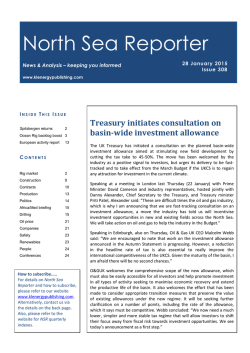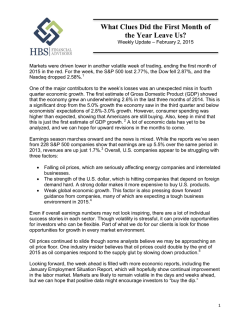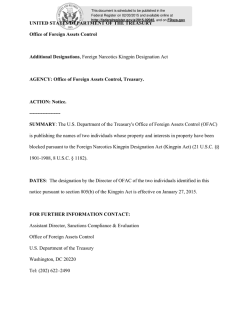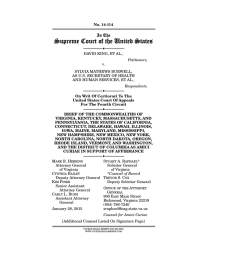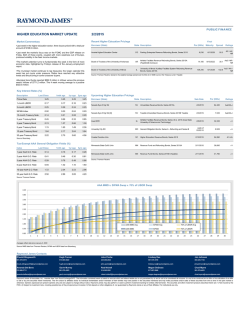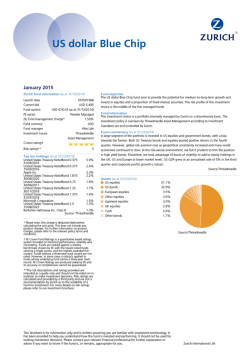
In the Supreme Court of the United States
No. 14-114 In the Supreme Court of the United States _________ D AVID K ING , ET AL ., Petitioners, v. S YLVIA B URWELL , S ECRETARY OF H EALTH AND H UMAN S ERVICES , ET AL ., Respondents. _________ On Writ of Certiorari to the United States Court of Appeals for the Fourth Circuit _________ BRIEF OF AMICI CURIAE FORMER GOVERNMENT OFFICIALS IN SUPPORT OF RESPONDENTS _________ NICHOLAS BAGLEY ORRICK, HERRINGTON & SUTCLIFFE LLP 51 West 52nd Street New York, New York 10019 (212) 506-5046 Counsel for Amici Curiae Gotbaum, Rabb, Rivlin, Samuels, and Vladeck SALLY KATZEN 40 Washington Square South, Room 426 New York, New York 10012 (212) 992-8981 BORIS BERSHTEYN Counsel of Record ROMÁN J. RODRIGUEZ MICHAEL SPRINGER MICAH F. FERGENSON BREANNA E. FIELDS KEVIN HU STEFANIE E. NEALE SKADDEN, ARPS, SLATE, MEAGHER & FLOM LLP Four Times Square New York, New York 10036 (212) 735-3000 [email protected] Counsel for Amici Curiae Gotbaum, Rabb, Rivlin, Samuels, and Vladeck i TABLE OF CONTENTS Page TABLE OF AUTHORITIES..................................... ii INTEREST OF AMICI CURIAE .............................. 1 SUMMARY OF THE ARGUMENT ........................ 3 ARGUMENT ............................................................. 4 I. This Court Should Defer to Treasury’s Resolution of Any Ambiguity in § 36B................ 4 II. None of the Canons for Construing Tax or Appropriations Laws Counsels against Deferring to Treasury’s Interpretation of Ambiguous Language in § 36B. ........................... 9 III. Treasury, Not HHS, Is Charged with Resolving Any Ambiguities Arising out of § 36B. ................................................................... 18 IV. Treasury’s Regulation Defining the Scope of the Tax Credit Was the Product of Reasoned Decision-Making. ............................... 22 CONCLUSION ........................................................ 27 ii TABLE OF AUTHORITIES Cases Page(s) AFL-CIO v. Chao, 409 F.3d 377 (D.C. Cir. 2005)............................................................... 5 Barnhart v. Walton, 535 U.S. 212 (2002) ................ 7 Bragdon v. Abbott, 524 U.S. 624 (1998) ................ 21 Brown v. Gardner, 513 U.S. 115 (1994) ................ 19 Chevron U.S.A., Inc. v. Natural Resources Defense Council, Inc., 467 U.S. 837 (1984) ......................................................... 3, 4 Citizens to Preserve Overton Park, Inc. v. Volpe, 401 U.S. 402 (1971) .......................... 23 City of Arlington v. FCC, 133 S. Ct. 1863 (2013) ......................................................... 8, 9 Coeur Alaska Inc. v. Southeast Alaska Conservation Council, 557 U.S. 261 (2009) ........................................................... 21 Commissioner v. Estate of Hubert, 520 U.S. 93 (1997) ...................................................... 14 Commissioner v. Jacobson, 336 U.S. 28 (1949) ........................................................... 14 Eldred v. Ashcroft, 255 F.3d 849, 850-51 (D.C. Cir. 2001), aff’d, 537 U.S. 186 (2003) ........................................................... 22 FDA v. Brown & Williamson, 529 U.S. 120 (2000) ................................................ 6, 18 iii INS. v. Aguirre-Aguirre, 526 U.S. 415 (1999) ............................................................. 8 INS v. Chadha, 462 U.S. 919 (1983) ..................... 26 Mayo Foundation for Medical Education & Research v. United States, 131 S. Ct. 704 (2011) ...............................5, 10, 11, 12, 14 Morgan Stanley Capital Group Inc. v. Public Utility District No. 1, 554 U.S. 527 (2008) ............................................ 26 Motor Vehicle Manufacturers Ass'n of United States, Inc. v. State Farm Mutual Automobile Insurance Co., 463 U.S. 29 (1983) ....................................... 22 National Association of Home Builders v. Defenders of Wildlife, 551 U.S. 644 (2007) ........................................................... 21 National Muffler Dealers Association, Inc. v. United States, 440 U.S. 472 (1979) ......... 14 National Railroad Passenger Corp. v. Boston & Maine Corp., 503 U.S. 407 (1992) ............................................................. 6 New Jersey v. New York, 523 U.S. 767 (1998) ........................................................... 22 In re Permian Basin Area Rate Cases, 390 U.S. 747 (1968) .............................................. 8 Scialabba v. Cuellar de Osorio, 134 S. Ct. 2191 (2014) .................................................. 18 SEC v. Chenery, 318 U.S. 80 (1943) ...................... 25 iv Sutton v. United Air Lines, Inc. 527 U.S. 471 (1999) .................................................... 21 United States v. Cleveland Indians Baseball Co., 532 U.S. 200 (2001) ............... 13 United States v. Correll, 389 U. S. 299 (1967) ........................................................... 12 United States v. Irvine, 511 U.S. 224 (1994) ......... 15 United States v. Mead Corp., 533 U.S. 218 (2001) ............................................................. 5 United States v. Pelzer, 312 U. S. 399 (1941) ........................................................... 15 Utility Air Regulatory Group v. EPA, 134 S. Ct. 2427 (2014) .............................................. 6 Yazoo & Mississippi Valley Railroad Co. v Thomas, 132 U.S. 174 (1889) ...................... 10 Constitutional & Statutory Provisions U.S. Const., art. I, § 8, cl. 1 .................................... 15 U.S. Const., art. I, § 8, cl. 12 .................................. 17 5 U.S.C. § 706(2)..................................................... 23 26 U.S.C. § 36B ........................................................ 4 26 U.S.C. § 36B(g) ........................................ 4, 17, 19 26 U.S.C. § 162 ....................................................... 13 26 U.S.C. § 263(a)................................................... 13 26 U.S.C. § 482 ....................................................... 12 26 U.S.C. § 1502 ..................................................... 13 v 26 U.S.C. § 7805(a)................................................... 5 31 U.S.C. § 1324 ..................................................... 16 42 U.S.C. § 18032(f)(1)(A) ...................................... 20 42 U.S.C. § 18082(a) .............................................. 19 Patient Protection and Affordable Care Act, Pub. L. No. 111-148, 124 Stat. 119: § 1401, 124 Stat. 213 ..................................... 4 § 1401(d), 124 Stat. 220............................... 17 Pub. L. No. 97-258, 96 Stat. 877 (1982) ................ 17 Rules & Regulations 26 C.F.R. §1.1502-0 to 99a (2014).......................... 12 26 C.F.R. §1.162-4 (2014) ....................................... 13 26 C.F.R. § 1.263(a)-1(b) (2014) ............................. 13 26 C.F.R. § 1.36B-1(k) (2014)................................. 20 45 C.F.R. § 155.20 (2014) ....................................... 20 45 C.F.R. § 155.340 (2014) ..................................... 20 Other Authorities 1 Government Accountability Office, Principles of Federal Appropriations Law (3d ed. 2004) ........................................ 17 Administrative Conference of the United States, Recommendation 2012-5: Improving Coordination of Related Agency Responsibilities (adopted June 15, 2012) ............................................. 21 vi Antonin Scalia & Bryan A. Garner, Reading Law: The Interpretation of Legal Texts 362 (2012) ................................ 15 Black’s Law Dictionary (9th ed. 2009) .................. 15 Congressional Research Service, Health Insurance Premium Credits in the Patient Protection and Affordable Care Act (2014) ............................................ 16 Deduction for Qualified Film and Television Production Costs, 77 Fed. Reg. 72923-01 (Dec. 7, 2012) ....................... 11 Health Insurance Premium Tax Credit, 76 Fed. Reg. 50,931 (Aug. 17, 2011) ................ 20 Health Insurance Premium Tax Credit, 77 Fed. Reg. 30,377 (May 23, 2012) ............. 5, 23 James R. Hines, Jr. & Kyle D. Logue, Delegating Tax 19 (Univ. of Mich. Law & Econ. Research Paper No. 14005)............................................................... 13 Memorandum from Cameron Arterton, Counsel, Office of Tax Legislative Counsel, U.S. Treasury Dep’t, to Emily McMahon, Deputy Assistant Sec’y, U.S. Treasury Dep’t (May 16, 2012)............................................................. 25 Memorandum, Pre-Final Rule Analysis Memo (Feb. 2012) ........................................ 24 vii New Markets Tax Credit Non-Real Estate Investments, 77 FR 59544-01 (Sept. 28, 2012)....................................................... 11 Nuclear Decommissioning Funds, 75 FR 80697-01 (Dec. 23, 2010) ............................. 11 Reginfo.gov, http://www.reginfo.gov/public/do/PR AViewICR?ref_nbr=201404-1545009 (last visited Jan. 23, 2015) ..................... 9 Research Expenditures, 79 Fed. Reg. 42193-01 (July 21, 2014) ............................. 11 Staff of H. Comm. on Oversight & Gov’t Reform and H. Comm. On Ways & Means, 113th Cong., Administration Conducted Inadequate Review of Key Issues Prior To Expanding Health Law’s Taxes And Subsidies (Feb. 5, 2014), .................................. 24, 25, 26 Tax Credit for Employee Health Insurance Expenses of Small Employers, 79 Fed. Reg. 36640-01 (June 30, 2014) ........... 11 1 INTEREST OF AMICI CURIAE Amici are former senior officials in the Department of the Treasury, the Department of Health and Human Services (HHS), and the Office of Management and Budget (OMB).1 Amici share a profound concern about the implications of an argument made by petitioners—and some of the amici in support of petitioners—that the federal courts do not owe deference to the rule promulgated by the Treasury Department in this case even if the statutory provision that the rule construed is ambiguous. This argument, if accepted, would substantially impair the ability of executive branch officials charged with administering federal tax laws and health-care programs—and likely many other significant and well-established federal programs— to faithfully discharge the responsibilities that Congress has assigned them. Joshua Gotbaum was the Assistant Secretary of the Treasury for Economic Policy from 1996 to 1997 and the Executive Associate Director at OMB from 1997 until 2001, as well as the Controller, Acting Deputy Director for Management, and, briefly, Acting Director of By letters on file with the Clerk, the parties have consented to the filing of this brief. No counsel for a party authored the brief in whole or in part, and no person or counsel other than amici curiae or their counsel made a monetary contribution to fund the preparation or submission of this brief. 1 Amici submit this brief solely in their individual capacities, and not as representatives of any agency, institution, or organization with which they are or have been affiliated. 2 OMB. His federal service began in the Ford Administration. Sally Katzen was the Administrator of the Office of Information and Regulatory Affairs (OIRA) from 1993 to 1998 and the Deputy Director for Management at OMB from 1999 to 2001. Harriet S. Rabb was General Counsel at HHS from 1993 to 2001. Alice Rivlin was the Director of OMB from 1994 to 1996 as well as Assistant Secretary for Planning and Evaluation and the U.S. Department of Health, Education and Welfare from 1968 to 69. Leslie B. Samuels was the Assistant Secretary of the Treasury for Tax Policy from 1993 to 1996. Bruce C. Vladeck was the Administrator of the Health Care Financing Administration (HCFA), now the Centers for Medicare and Medicaid Services (CMS), from 1993 to 1997. 3 SUMMARY OF THE ARGUMENT Three decades ago, in a decision that became the cornerstone of modern administrative law, this Court announced an enduring principle of judicial restraint: Where a statute “is silent or ambiguous with respect to the specific issue, the question for the court is whether the agency’s answer is based on a permissible construction of the statute.” Chevron, U.S.A., Inc. v. Natural Res. Def. Council, Inc., 467 U.S. 837, 843 (1984). The Chevron doctrine rests on the recognition that a federal agency’s subjectmatter expertise and public accountability counsel federal courts to defer to that agency’s reasonable construction of a statute that it administers. “The responsibilities for assessing the wisdom of … policy choices and resolving the struggle between competing views of the public interest are not judicial ones.” Id. at 866. Much of the dispute in this case concerns whether the language of § 36B of the Internal Revenue Code (added to the Code by the Patient Protection and Affordable Care Act (ACA), Pub. L. No. 111-148, 124 Stat. 119) is ambiguous with regard to the availability of tax credits in states that declined to establish their own health insurance exchanges. This brief, however, is not about whether this ambiguity exists. Amici focus, instead, on what must happen if this Court determined that the statutory provision is ambiguous. In that event, fidelity to the Chevron doctrine—and sound separation of responsibilities among the branches of the federal government— 4 would require courts to defer to the Treasury Department’s interpretation of ambiguous language. Petitioners do not share that view. They urge this Court to dispense with deference “even if there were ambiguity” in the statute. Pet. Br. 51. In so arguing, however, they do not deny that Congress vested explicit authority in the Treasury Department to “prescribe such regulations as may be necessary,” to implement the ACA’s tax-credit provision. 26 U.S.C. § 36B(g). Nor do they contest that Treasury’s regulation was adopted through an appropriate notice-and-comment process. Instead, petitioners make a series of disparate arguments that are alike in one critical respect: If accepted, they would undermine the longstanding Chevron framework, encourage judicial superintendence of agency policy choices, limit agency flexibility to work within the boundaries that Congress has established, and interfere with the sound execution of the nation’s laws. If the ACA “has not directly addressed the precise question at issue,” Chevron, 467 U.S. at 843, then deference is owed to Treasury’s considered resolution of any ambiguity. ARGUMENT I. This Court Should Defer to Treasury’s Resolution of Any Ambiguity in § 36B. The ACA added § 36B to the Internal Revenue Code in order to extend tax credits to certain taxpayers who buy health insurance on the newly established exchanges. See ACA, § 1401 (adding 26 U.S.C. § 36B). To implement this tax-credit program, 5 Congress empowered Treasury to “prescribe such regulations as may be necessary to carry out the provisions of this section.” 26 U.S.C. § 36B(g). This express delegation of rulemaking authority supplemented Treasury’s preexisting authority to “prescribe all needful rules and regulations for the enforcement of this title.” Id., § 7805(a). Congress has thus doubly delegated to the Treasury Department the authority to issue rules to fill in any gaps or resolve any latent ambiguities in the statutory provisions governing ACA tax credits. See AFL-CIO v. Chao, 409 F.3d 377, 393 (D.C. Cir. 2005) (Roberts, J., dissenting) (“[T]he statute speaks in terms of what is ‘necessary’ … an inherently discretionary standard that clearly invites further definition by the Secretary.”). Treasury has drawn on that authority in crafting the rule at issue here. See Health Insurance Premium Tax Credit, 77 Fed. Reg. 30,377-01, 30,385 (May 23, 2012) (listing both 26 U.S.C. § 7805 and § 36B(g) as authority for the tax-credit rules). As this Court recently reiterated— specifically in the tax context—Chevron applies where “it appears that Congress delegated authority to the agency generally to make rules carrying the force of law, and that the agency interpretation claiming deference was promulgated in the exercise of that authority.” Mayo Found. for Med. Educ. & Research v. United States, 131 S. Ct. 704, 713 (2011) (quoting United States v. Mead Corp., 533 U.S. 218, 226-27 (2001)). Treasury is thus owed Chevron deference with respect to its interpretation of § 36B. Petitioners resist this conclusion. In their view, Treasury’s decision to allow tax credits on federally- 6 facilitated exchanges had too much “economic or political significance” to warrant this Court’s respect. Pet. Br. 52. Petitioners are mistaken. It is true—but irrelevant—that “[w]hen an agency claims to discover in a long-extant statute an unheralded power to regulate ‘a significant portion of the American economy,’ [this Court] typically greet[s] its announcement with a measure of skepticism.” Util. Air Regulatory Grp. v. EPA (UARG), 134 S. Ct. 2427, 2444 (2014) (citing FDA v. Brown & Williamson Tobacco Corp., 529 U.S. 120, 159 (2000)). The Court has thus rebuffed EPA when it relied on decades-old provisions of the Clean Air Act to assert “[t]he power to require permits for the construction and modification of tens of thousands, and the operation of millions, of small [pollution] sources nationwide,” UARG, 134 S. Ct. at 2444, and FDA when it discovered in the 1938 Food, Drug, and Cosmetic Act the sweeping authority to regulate tobacco products, Brown & Williamson, 529 U.S. at 160-61. Treasury’s regulation bears no resemblance to the newfound interpretations of “vast economic and political significance,” UARG, 134 S. Ct. at 2444 (internal quotation marks omitted), that the Court reviewed in UARG and Brown & Williamson. Far from unexpectedly arrogating to itself regulatory powers on the basis of statutes enacted some decades earlier, Treasury has issued a predictable—indeed, indispensable—rule that articulates the basic parameters governing the availability of new tax credits. See Nat’l R.R. Passenger Corp. v. Boston & Maine Corp., 503 U.S. 407, 418 (1992) (“Few phrases in a complex scheme of regulation are so clear as to be beyond the need for interpretation when applied 7 in a real context.”). It is unclear how Treasury could have implemented the tax-credit provision at all without first resolving whether tax credits were available in states that declined to establish their own exchanges. See Barnhart v. Walton, 535 U.S. 212, 222 (2002) (noting that “the importance of the question to administration of the statute” bolsters the case for Chevron deference). Petitioners cannot plausibly claim that Treasury was obliged to avoid making a decision with “vast economic and political significance.” It had no such option. To do its job, Treasury had to decide whether tax credits would be available in the numerous states that elected to use HealthCare.gov (the federally operated exchange). That decision would have had major economic and political significance whatever the agency decided. Even less plausible is any suggestion that federal courts owe agencies less deference on “important” questions. If accepted, petitioners’ view would hamstring the ability of the executive branch to resolve authoritatively the questions that are most critical to the administration of law, but that statutory language does not fully resolve. Chevron would become not a doctrine of judicial deference to agency expertise, but an instrument of indecision and uncertainty—thwarting agencies’ efforts to draw on their expertise and policy judgment in faithfully executing the laws. This Court has never held that the mere significance of an agency action renders it ineligible for Chevron deference. To the contrary, this Court emphasized just two terms ago that “we have 8 applied Chevron where concerns about agency selfaggrandizement are at their apogee: in cases where an agency’s expansive construction of the extent of its own power would have wrought a fundamental change in the regulatory scheme.” City of Arlington v. FCC, 133 S. Ct. 1863, 1872 (2013). If anything, the need for Chevron deference reaches its height when the courts review agency decisions of substantial moment. It is then that the agency’s expertise and political accountability are most essential—and where the structure of the federal government most forcefully counsels judicial restraint. Cf. INS v. Aguirre-Aguirre, 526 U.S. 415, 425 (1999) (“[J]udicial deference to the Executive Branch is especially appropriate in the immigration context where officials exercise especially sensitive political functions that implicate questions of foreign relations.” (internal quotation marks omitted)); In re Permian Basin Area Rate Cases, 390 U.S. 747, 790 (1968) (“We must reiterate that the breadth and complexity of the [Federal Power] Commission’s responsibilities demand that it be given every reasonable opportunity to formulate methods of regulation appropriate for the solution of its intensely practical difficulties.”). What is more, there are no judicially manageable standards to govern a free-floating inquiry into the “importance” of a particular agency action. In City of Arlington v. FCC, this Court rejected the elusive distinction between “the big, important” interpretations and “humdrum, run-of-the-mill stuff.” 133 S. Ct. at 1868. Courts would otherwise be plunged into unproductive line-drawing exercises, especially for agencies with responsibilities as 9 substantial as the Treasury Department’s. Consider, for example, that the time taxpayers take to complete income-tax forms, the format of which is almost entirely within Treasury’s control, is estimated to cost 150.7 million filers a combined $33.7 billion per year—making the creation of those forms a “major” decision by any measure.2 Nobody suggests, however, that the economic significance of tax forms means Treasury should receive less deference on designing them. In short, an agency decision is not less worthy of respect because that decision is “major”; instead, “the question a court faces when confronted with an agency’s interpretation of a statute it administers is always, simply, whether the agency has stayed within the bounds of its statutory authority.” Id. II. None of the Canons for Construing Tax or Appropriations Laws Counsels against Deferring to Treasury’s Interpretation of Ambiguous Language in § 36B. Petitioners turn next to a frontal attack on the application of Chevron deference in the administration of the tax code. In their view, any ambiguity in a tax statute pertaining to exemptions, deductions, and tax credits must be resolved not with reference to the agency’s policy judgment, but instead with reference to a rule requiring those exemptions, deductions, and credits to be “‘expressed in clear and unambiguous terms.’” Pet. Br. 54 See Reginfo.gov, http://www.reginfo.gov/public/do/ PRAViewICR?ref_nbr=201404-1545-009 (last visited Jan. 23, 2015). 2 10 (quoting Yazoo & Miss. Valley R.R. Co. v. Thomas, 132 U.S. 174, 183 (1889)); see also Br. of Wash. Legal Found. in Support of Pet. 14-22. This canon of construction, in petitioners’ view, overrides Chevron deference in any case involving the construction of a tax-credit statute. Petitioners’ argument is puzzling for any number of reasons, chief among them that it is foreclosed by precedent. In Mayo Foundation for Medical Education & Research v. United States, 131 S. Ct. 704 (2011), this Court held that Chevron is the appropriate framework for measuring the legality of a Treasury Department interpretation of a statutory tax exemption. In that instance, the Court considered the reasonableness of the agency’s interpretation only after concluding that the Internal Revenue Code was ambiguous about the scope of that exemption. See id. at 711 (holding that “the plain text of the statute” does not “speak with the precision necessary to say definitively whether [the statute] applies to medical residents” (alternation in original) (internal quotation marks omitted)). On petitioners’ theory, this was analytical error. The Court should instead have held that taxpayers were ineligible for the exemption—not because Treasury reasonably reached that conclusion, but because the statute, interpreted in light of the clear-statement rule, commanded that result. This Court took a decidedly different approach in Mayo Foundation—and did so unanimously. After finding the tax exemption ambiguous, the Court emphasized the importance of drawing on Treasury’s expertise and policy judgment in the administration 11 of the tax code. “Filling gaps in the Internal Revenue Code,” it held, “plainly requires the Treasury Department to make interpretive choices for statutory implementation at least as complex as the ones other agencies must make in administering their statutes.” Id. at 713. For that reason, “[t]he principles underlying [the] decision in Chevron apply with full force in the tax context.” Id. Although petitioners claim fidelity to Mayo Foundation, their argument, if accepted, would effectively wipe that decision from the U.S. Reports. Tax law is so arcane mainly because of the thousands of exemptions and deductions that stud the Internal Revenue Code. Interpreting those provisions occupies much of Treasury’s administrative time and attention. See, e.g., Research Expenditures, 79 Fed. Reg. 42,193-01 (July 21, 2014) (defining expenditures eligible for the Research and Experimental Expenditure Deduction); Tax Credit for Employee Health Insurance Expenses of Small Employers, 79 Fed. Reg. 36,640-01 (June 30, 2014) (defining small employers’ eligibility for the credit); Deduction for Qualified Film and Television Production Costs, 77 Fed. Reg. 72,923-01 (Dec. 7, 2012) (defining the deduction’s eligibility requirements); New Markets Tax Credit Non-Real Estate Investments, 77 Fed. Reg. 59,544-01 (Sept. 28, 2012) (amending the eligibility requirements for the New Markets Tax Credit); Nuclear Decommissioning Funds, 75 Fed. Reg. 80,697-01 (Dec. 23, 2010) (defining eligibility for deductions for payments made to the Nuclear Decommissioning Reserve Fund). 12 As this Court reasoned in Mayo Foundation, the complexity of this task—the difficulty of interpreting all those exemptions and deductions—militates in favor of, not against, Chevron deference. 131 S. Ct. at 713-14. Petitioners, by contrast, invite the federal courts, not the experts at Treasury, to take the lead in administering huge swathes of the tax code. This Court has declined such invitations time and again, emphasizing that it does “not sit as a committee of revision to perfect the administration of the tax laws.” United States v. Correll, 389 U.S. 299, 306-07 (1967). The Court should not change course in this case. In fact, Treasury routinely interprets ambiguous tax provisions, including those involving exemptions and deductions. In § 482 of the Internal Revenue Code, for example, Congress instructed the agency to “distribute, apportion, or allocate gross income, deductions, credits, or allowances” among organizations that are owned or controlled by the same interests in order “to prevent evasion of taxes.” 26 U.S.C. § 482. Congress left the interpretation of this provision to Treasury’s sound judgment. In response, the agency “has issued voluminous regulations under section 482, thereby assuming the entire responsibility for its definition and enforcement.” James R. Hines, Jr. & Kyle D. Logue, Delegating Tax 19 (Univ. of Mich. Law & Econ. Research Paper No. 14-005)3; see also 26 C.F.R. §§ 1.1502-0 to 99a (2014) (507 pages of regulations issued under § 1502, which directs the Treasury Secretary to prescribe all regulations “necessary” to 3 Available at http://ssrn.com/abstract=2402047. 13 “prevent avoidance” of the tax liability of corporations that file consolidated returns, 26 U.S.C. § 1502). On petitioners’ theory, however, Treasury should be given no deference on any regulation that addresses the apportionment of deductions. The agency’s true task (as petitioners presumably would have it) would be a robotic one: to minimize deductions and maximize federal revenue. This is not—and should not be—the law. Similarly, § 162 of the tax code allows taxpayers to deduct their “ordinary and necessary” business expenses, including those for repairs on a building. 26 U.S.C. § 162. But § 263(a) prohibits those same taxpayers from deducting any amounts “for new buildings or for permanent improvements.” 26 U.S.C. § 263(a). Putting aside the interpretive breadth of such terms as “ordinary” and “necessary,” drawing the line between ordinary repairs and permanent improvements demands policy expertise of the sort that the federal courts generally lack. Yet petitioners would have this Court discard the regulations that Treasury has laboriously crafted, see 26 C.F.R. §§ 1.162-4, 1.263(a)-1(b) (2014), in favor of a rule that would resolve any doubtful case against the taxpayer. This unduly blunt interpretive approach would impede the sound administration of the tax laws. Perhaps that explains why this Court, in cases involving Treasury interpretations of exemptions and deductions, has never so much as hinted that the clear-statement rule trumps Chevron deference. See, e.g., United States v. Cleveland Indians Baseball Co., 532 U.S. 200, 218-19 (2001) (deferring to a 14 Treasury rule governing an exclusion); Comm’r v. Estate of Hubert, 520 U.S. 93, 120 (1997) (O’Connor, J., concurring in the judgment) (deferring to a Treasury rule governing a deduction); id. at 127 (Scalia, J., dissenting) (“[W]hen a provision of the Internal Revenue Code is ambiguous . . ., this Court has consistently deferred to the Treasury Department’s interpretive regulations so long as they implement the congressional mandate in some reasonable manner.” (internal quotation marks omitted)). In fact, the leading pre-Chevron case endorsing deference to the Treasury Department, National Muffler Dealers Association, Inc. v. United States, involved the interpretation of an income-tax exemption. 440 U.S. 472, 473 (1979). Notwithstanding any clear-statement rule, the Court held that deference was essential to assure that “the rules will be written by masters of the subject, who will be responsible for putting the rules into effect.” Id. at 477 (citation omitted) (internal quotation marks omitted). And when this Court departed from its approach in National Muffler Dealers Association, it charted a course of even greater deference to the Treasury Department. See Mayo Found., 131 S. Ct. at 713-14. Rigidly applying any purported clear-statement rule would be especially anomalous in a case involving tax credits. Exemptions and deductions must be denominated with clarity because, as the Court explained in Commissioner v. Jacobson, “[t]he income taxed is described in sweeping terms and should be broadly construed in accordance with an obvious purpose to tax income comprehensively.” 336 U.S. 28, 49 (1949). But neither petitioners nor their 15 amici identify any case in which this Court applied a clear-statement rule to tax credits. For good reason: Tax credits do not reduce the amount of a taxpayer’s taxable income or otherwise diminish the tax base. To the contrary, credits offset the amount the taxpayer must pay only after her tax liability has already been established. See Black’s Law Dictionary 1599 (9th ed. 2009) (defining “tax credit” to be “[a]n amount subtracted directly from one’s total tax liability”). Credits—especially refundable credits— are thus more akin to subsidies than they are to exemptions or deductions. There is no reason to give tax-credit statutes a more grudging reading than any other statute extending a government benefit.4 Even if this case triggers the principle that exemptions and deductions should be read narrowly, that principle is outweighed by a competing principle of statutory construction: that “‘revenue laws are to be construed in the light of their general purpose to establish a nationwide scheme of taxation uniform in its application.’” United States v. Irvine, 511 U.S. 224, 238-39 (1994) (quoting United States v. Pelzer, 312 U.S. 399, 402 (1941)). This canon of uniform application reinforces Treasury’s view that the ACA authorizes tax credits across the United States, whether or not an individual state has elected to establish its own exchange. Cf. U.S. Const., art. I, § 8, cl. 1 (providing that “all Duties, Imposts and Cf. Antonin Scalia & Bryan A. Garner, Reading Law: The Interpretation of Legal Texts 362 (2012) (arguing that the canon that exemptions must be strictly construed lacks a sound justification and that “the terms of [a tax] exception ought to be reasonably, rather than strictly, construed”). 4 16 Excises shall be uniform throughout the United States”). Petitioners nowhere explain why the uniformity canon should (let alone must) give way to the canon narrowly construing exemptions and deductions, nor could they. The fact that different tax canons point different ways counsels against petitioners’ wooden approach to the tax code. Finally, petitioners are simply wrong to suggest that Treasury improperly gave an overbroad interpretation to an appropriations law, purportedly in violation of the Appropriations Clause. See Pet. Br. 54-55; see also Br. of Amici Curiae Admin. & Const. Law Profs. in Support of Pet. 6-17. Contrary to petitioners’ suggestion, § 36B is not an appropriations statute—and therefore interpreting § 36B does not implicate any interpretive canons that apply to such statutes. Rather, § 36B permits Treasury to make payments out of funds appropriated by a separate statutory provision codified in a different volume of the U.S. Code: 31 U.S.C. § 1324. See, e.g., Congressional Research Service, Health Insurance Premium Credits in the Patient Protection and Affordable Care Act 1-2 n.7 (2014), available at https://www.fas.org/sgp/crs/misc/ R41137.pdf (“For tax years beginning after December 31, 2013, 31 U.S.C. 1324 appropriates necessary amounts to the Treasury Secretary for disbursements due under § 36B of the IRC. This permanent appropriation means that the premium credits do not require annual appropriations.”). Section 1324 is a longstanding, permanent appropriation stating that “[n]ecessary amounts are appropriated to the Secretary of the Treasury for refunding internal revenue collections as provided by 17 law.” Pub. L. No. 97-258, 96 Stat. 877, 923 (1982) (adding 31 U.S.C. § 1324(a) to the U.S. Code); 1 Government Accountability Office, Principles of Federal Appropriations Law, p. 2–16 (3d ed. 2004) (citing 31 U.S.C. § 1324 as an example of a permanent appropriation).5 The ACA explicitly added § 36B to the list of tax provisions that were eligible for refunds under § 1324. ACA, Pub. L. No. 111-148, § 1401(d), 124 Stat. 220 (2010). There is thus no question that Treasury may refund to taxpayers any amount in excess of their tax liability, including money due on account of a refundable tax credit under the ACA. Nor is there any question, again, that Congress has vested Treasury with authority to resolve statutory ambiguities pertaining to the availability of those tax credits. See 26 U.S.C. § 36B(g) (authorizing Treasury to “prescribe such regulations as may be necessary to carry out the provisions of this section”). Amici Citizens’ Council et. al argue that permanent appropriations are unconstitutional, because they require future Congresses to repeal appropriations rather than simply waiting for them to expire. See Br. of Amici Curiae Citizens’ Council et. al in Support of Pet. at 22–27. The argument has no foundation. No one doubts that Congress may pass laws that remain in effect until a future Congress repeals them. That includes, with one express exception, appropriations statutes. See U.S. Const. art. I, § 8, cl. 12 (“[The Congress shall have power]—To raise and support Armies, but no Appropriation of Money to that Use shall be for a longer Term than two Years.”). 5 18 III. Treasury, Not HHS, Is Charged with Resolving Any Ambiguities Arising out of § 36B. Petitioners’ final contention is that, because Treasury does not actually administer any provisions of the ACA that give rise to any ambiguity, it is not entitled to deference. See Pet. Br. 55-56. Petitioners’ premise is false: the ambiguity does arise in the Internal Revenue Code. But even if their premise were true, Chevron deference would nonetheless be appropriate. The disputed language in the ACA arises, as petitioners acknowledge, in § 36B of the Internal Revenue Code. The question in this case is whether a particular phrase in § 36B—“an Exchange established by the State under [42 U.S.C. §18031]”— eliminates subsidies in states that declined to establish their own exchanges. See Pet. Br. i (framing their “question presented” around the language of § 36B). This case is thus about—indeed, it is principally about—what that phrase means. Against that backdrop, petitioners’ claim that “nobody contends that th[is] language … is itself ambiguous” is baffling. Pet. Br. 55. It is irrelevant that HHS bears responsibility for administering ACA provisions that may make apparent the ambiguity in § 36B. This Court has emphasized that “[t]he meaning—or ambiguity—of certain words or phrases may only become evident when placed in context.” Brown & Williamson, 529 U.S. at 132; see also Scialabba v. Cuellar de Osorio, 134 S. Ct. 2191 (2014) (plurality opinion) (noting 19 that where two statutory clauses give clear guidance when read separately, but “[do] not easily cohere with each other,” the resulting “internal tension makes possible alternative reasonable constructions”). That is why the exchangeauthorizing provisions of the ACA, together with other provisions of the statute, help to make sense of the phrase “an Exchange established by the State under 42 U.S.C. § 18031.” See Gov’t Br. 27-35. An agency decision does not become ineligible for Chevron deference whenever an agency adheres to the statutory maxim that statutes should be read as a whole. See Brown v. Gardner, 513 U.S. 115, 118 (1994) (“Ambiguity is a creature not [just] of definitional possibilities but [also] of statutory context.”). Nor does that maxim lose its force when Congress charges different agencies with implementing different statutory provisions. Treasury’s regulation did not offer—and did not purport to offer—an authoritative, legally binding interpretation of any statutory provisions within the jurisdiction of HHS. Moreover, this case offers no occasion to hypothesize whether Treasury’s regulation might clash with HHS’s views about the meaning of provisions that HHS administers. Congress largely addressed such concerns by directing the Treasury and HHS to consult one another in implementing the tax-credit provisions of the ACA. See 42 U.S.C. § 18082(a) (providing that “[t]he Secretary [of HHS], in consultation with the Secretary of the Treasury, shall establish a program” to make advance payments of tax credits); 26 U.S.C. § 36B(g)(1) 20 (directing Treasury to issue regulations for “coordination of the [tax] credit allowed under” § 36B with HHS’s “program for advance payment of the credit”). The two agencies thus “work[ed] in close coordination to release guidance related to Exchanges.” Health Insurance Premium Tax Credit, 76 Fed. Reg. 50,931, 50,932 (Aug. 17, 2011). That coordinated effort led to consistent definitions of statutory terms: Treasury’s regulation, for example, cross-references the HHS definition of “Exchange,” which HHS defined to include federallyfacilitated exchanges. See 26 C.F.R. § 1.36B-1(k) (2014) (“Exchange has the same meaning as in 45 CFR § 155.20.”). Close interagency coordination may explain, too, why HHS regulations are in complete accord with Treasury’s position that people who buy qualified health plans “through an Exchange” are eligible for advance tax credits. See 45 C.F.R. § 155.20 (2014) (defining “Exchange” to include federally-facilitated exchanges); 45 C.F.R. § 155.340 (2014) (setting rules for an “Exchange” to administer tax credits).6 Amicus State of Indiana suggests that Treasury is not owed deference because HHS has already acted to resolve any anomalies that petitioners’ reading of the ACA would cause— particularly in connection with the ACA’s definition of “qualified individual.” Indiana Br. 15. But HHS’s interpretation of “qualified individual” would presumably be greeted with the same objection that has been lodged in this litigation against Treasury’s interpretation of § 36B: that it fails to attend to statutory language purportedly restricting the provision’s scope to state-established exchanges. See 42 U.S.C. § 18032(f)(1)(A). In any event, if either Treasury or HHS must act to prevent an absurd reading of a statute, no principle of law or logic suggests that HHS must act instead of Treasury. To the contrary, the 6 21 This Court has never suggested that a coordinated effort by multiple agencies to interpret the same statute deserves less deference than a single agency’s standalone interpretation. To the contrary, in Coeur Alaska, Inc. v. Southeast Alaska Conservation Council, the Court extended Chevron deference to a Clean Water Act regulation jointly issued by the Environmental Protection Agency and the Army Corps of Engineers. 557 U.S. 261, 277-78 (2009); see also Nat’l Ass’n of Home Builders v. Defenders of Wildlife, 551 U.S. 644, 665 (2007) (applying Chevron deference to a regulation issued by the National Marine Fisheries Service and the Fish and Wildlife Service “acting jointly”).7 Nor would a no-deference rule have a sound policy rationale. Coordination allows two agencies with very different missions to bring their respective expertise and experience to bear on a statutory scheme that touches on the jurisdictions of both—a practice that should be encouraged, not deterred. See generally Administrative Conference of the United States, Recommendation 2012-5, Improving Court should defer, under Chevron, to the executive branch’s considered judgment about how the federal agencies dually charged with administering a complex statute can most effectively construe ambiguous language to resolve or minimize any tensions within that statute’s provisions. In two earlier cases, the Court noted, but did not resolve, the question of deference owed to interpretations of certain provisions of the Americans with Disabilities Act and the Rehabilitation Act by one of multiple agencies charged with administering those statutes. See Sutton v. United Air Lines, Inc., 527 U.S. 471, 478-480 (1999); Bragdon v. Abbott, 524 U.S. 624, 642 (1998). 7 22 Coordination of Related Agency Responsibilities (adopted June 15, 2012). The fact that Treasury worked in coordination with HHS offers a powerful additional reason to defer to Treasury’s regulation— and certainly does not supply a reason to withhold deference altogether. IV. Treasury’s Regulation Defining the Scope of the Tax Credit Was the Product of Reasoned Decision-Making. Amici supporting the petitioners—but not petitioners themselves—have leveled a different accusation at Treasury’s regulation: that it is not owed deference because it was “not the product of reasoned decision-making.” See Br. for Sen. Cornyn et al. in Supp. of Pet. 30-33 (quoting Motor Vehicle Mfrs. Ass’n of U.S., Inc. v. State Farm Mut. Auto. Ins. Co., 463 U.S. 29, 52 (1983)) [Cornyn Br.]. Amici’s argument is not properly before the Court. See New Jersey v. New York, 523 U.S. 767, 781 n.3 (1998) (observing that the Court “must pass over the arguments of the named amici for the reason that ... the party to the case[] has in effect renounced them, or at least any benefit they might provide”); Eldred v. Ashcroft, 255 F.3d 849, 850-51 (D.C. Cir. 2001) (refusing to pass on claims that the parties to the litigation have declined to advance), aff’d, 537 U.S. 186 (2003). Even if the argument were before the Court, it is incorrect. The Administrative Procedure Act (APA) authorizes a reviewing court to “hold unlawful and set aside agency action, findings, and conclusions found to be arbitrary, capricious, an abuse of 23 discretion, or otherwise not in accordance with law.” 5 U.S.C. § 706(2). In measuring the reasonableness of an agency decision, the courts ask “whether the decision was based on a consideration of the relevant factors and whether there has been a clear error of judgment.” Citizens to Preserve Overton Park, Inc. v. Volpe, 401 U.S. 402, 416 (1971). A court, however, will not lightly invalidate an agency decision, for it “is not empowered to substitute its judgment for that of the agency.” Id. Treasury’s regulation easily satisfies the APA standard. To begin with, Treasury explained in its final rule that the text of the ACA “support[s] the interpretation that credits are available to taxpayers who obtain coverage through … the Federallyfacilitated Exchange” and that “the relevant legislative history does not demonstrate that Congress intended to limit the premium tax credit to State Exchanges.” Health Insurance Premium Tax Credit, 77 Fed. Reg. at 30,378. The very amici who challenge Treasury’s decision-making process rely on sources that, in turn, contain materials that demonstrate the care that Treasury took in reaching that conclusion. For example, amici point to a report that quotes at length from an internal memorandum—written in February 2012, well before Treasury’s regulation was issued—expanding the agency’s rationale: The term “established by a state” may be read as a restriction on the term “exchange” or it may be read as simply descriptive language. Interpreting the language as a restriction is inconsistent with the broad scheme of the 24 ACA to increase health insurance availability. Denying a premium tax credit to taxpayers enrolled in a QHP through the fed exchange while allowing a credit to those enrolled through state exchanges would be an incongruous result and could not have been Congress’ intent. The term “established by a state” should be interpreted to encompass the federal exchange because under [42 U.S.C. § 18041] of the ACA, the federal exchange steps into the shoes of a state exchange if a state declines to establish an exchange or if a state’s establishment of the exchange is delayed. A conclusion that the language [of] § 36B(b)(2)(A) is descriptive and not restrictive is further supported by the language of § 36B(f)(3), which imposes information reporting requirements on exchanges, including the federal exchanges, established under [§ 18041(c)] of the ACA. Memorandum, Pre-Final Rule Analysis Memo (Feb. 2012) (quoted in Staff of H. Comm. on Oversight & Gov’t Reform and H. Comm. On Ways & Means, 113th Cong., Administration Conducted Inadequate Review of Key Issues Prior To Expanding Health Law’s Taxes And Subsidies 22 (Feb. 5, 2014), available at http://oversight.house.gov/wpcontent/uploads/2014/02/IRS-Rule-OGR-WM-StaffReport-Final1.pdf (“Joint Report”)) (cited in Cornyn Br.). A separate internal memorandum from a Treasury official, also written prior to the rule’s release, offered still further explanation: 25 [W]e carefully considered the language of the statute and the legislative history and concluded that the better interpretation of Congressional intent was that premium tax credits should be available to taxpayers on any type of Exchange. For example, § 36B(f)(3) provides that “Each exchange … shall provide the following information to the Secretary and to the taxpayer with respect to any health plan provided through the Exchange …” The reference to [§ 18041(c)] is a reference to the section authorizing the federally-facilitated Exchange. There would be no reason for Congress to include—within the Code section that creates the premium tax credit—an obligation for a federally-facilitated Exchange to report data about enrollments to the Secretary unless the enrolling individuals were eligible for the premium tax credit. Memorandum from Cameron Arterton, Counsel, Office of Tax Legislative Counsel, U.S. Treasury Dep’t, to Emily McMahon, Deputy Assistant Sec’y, U.S. Treasury Dep’t (May 16, 2012) (quoted in Joint Report 23). These are the very arguments that the government advances today: that Treasury “steps into the shoes of a state exchange,” that the language of § 36B “is descriptive and not restrictive,” and that requiring federally-facilitated exchanges to report data on tax credits would be senseless if no tax credits were available. See Gov’t Br. 19-27. The government is thus neither pressing a post hoc rationale for its decision, see SEC v. Chenery, 318 26 U.S. 80, 88 (1943) (holding that judicial review would be “confin[ed] … to a judgment upon the validity of the grounds upon which the [agency] itself based its action”), nor “offer[ing] a justification in court different from what it provided in its opinion,” Morgan Stanley Capital Grp. Inc. v. Pub. Util. Dist. No. 1, 554 U.S. 527, 544 (2008). To the contrary, Treasury has been consistent—and reasonable— throughout. It is beside the point whether the agency’s reasoning comes in “a single paragraph,” see Cornyn Br. 31 (internal quotation omitted); an explanation does not become unreasonable by virtue of being concise. And the memoranda confirm that Treasury gave the matter serious, reasoned consideration. That is all the APA requires. It is similarly irrelevant that the staffs of two committees in the House of Representatives expressed the view that “neither the IRS nor Treasury engaged in reasoned decision-making.” Joint Report 31. That position—which is not a legislative act, cf. INS v. Chadha, 462 U.S. 919 (1983), and which is not binding on the executive, let alone on the judicial, branch of government—is unconvincing on its own terms: It ignores or minimizes the uncontroverted evidence, including but not limited to the two memoranda, that Treasury gave serious consideration to the question at issue in this case. See, e.g., Joint Report at 6-7 (reporting that Treasury officials canvassed, among other things, the ACA’s legislative history). Treasury’s deliberate and reasoned final interpretation, adopted after giving due consideration to a range of views, deserves deference. 27 CONCLUSION For the foregoing reasons, if this Court were to determine that § 36B of the Internal Revenue Code is ambiguous with regard to the availability of tax credits in states that declined to establish their own health insurance exchanges, then fidelity to Chevron requires judicial deference to Treasury’s interpretation of ambiguous statutory language. Tax credits should thus be available to taxpayers who obtain health insurance coverage through federallyfacilitated exchanges. 28 Respectfully submitted, NICHOLAS BAGLEY ORRICK, HERRINGTON & SUTCLIFFE LLP 51 West 52nd Street New York, NY 10019 (212) 506-5046 Counsel for Amici Curiae Gotbaum, Rabb, Rivlin, Samuels, and Vladeck SALLY KATZEN 40 Washington Square South, Room 426 New York, NY 10012 (212) 992-8981 Pro se January 28, 2015 BORIS BERSHTEYN Counsel of Record ROMÁN J. RODRIGUEZ MICHAEL SPRINGER MICAH F. FERGENSON BREANNA E. FIELDS KEVIN HU STEFANIE E. NEALE SKADDEN, ARPS, SLATE, MEAGHER & FLOM LLP Four Times Square New York, NY 10036 (212) 735-3000 [email protected] Counsel for Amici Curiae Gotbaum, Rabb, Rivlin, Samuels, and Vladeck
© Copyright 2026
